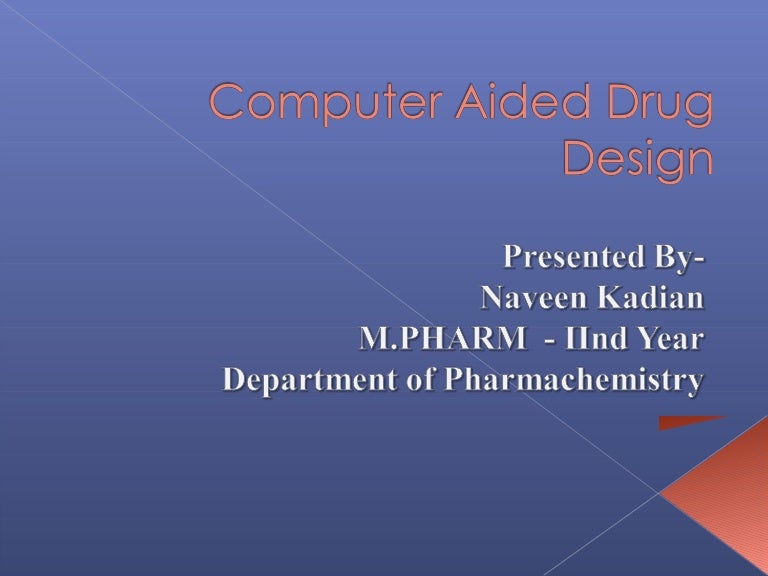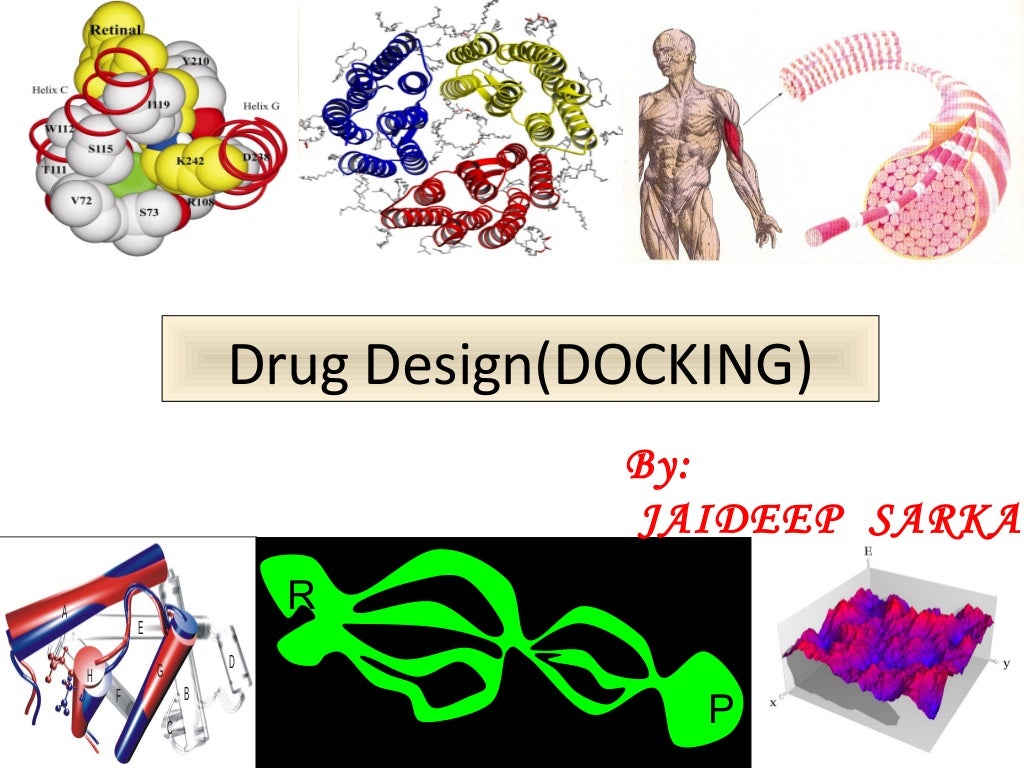Table Of Content
- Natural product-inspired strategies towards the discovery of novel bioactive molecules
- Principal Scientist - CADD
- What happens to the research data of drug molecules that stop at pre-clinical stage?
- QSAR analysis of VEGFR-2 inhibitors based on machine learning, Topomer CoMFA and molecule docking
- Computational Approaches in Drug Discovery and Design

The conventional QSAR methods can efficiently predict simple physicochemical properties such as logP and solubility. However, the QSAR prediction of complex biological properties such as drug efficacy and side effects is often not optimal as the methods use small training sets [108] and has coverage of limited chemical space [109]. The big data generated using high-throughput screening (HTS) techniques are huge challenges to traditional QSAR methods and machine learning techniques [40]. AI methods have been developed to deal with this big data of high volume and multidimensional nature to efficiently predict drug efficacy and side effects in animals or humans.
Natural product-inspired strategies towards the discovery of novel bioactive molecules

Thus, the generated databases (GDB) predict compounds that can be made of a specific number of atoms; for example, GDB-17 contained 166.4 billion molecules of up to 17 atoms of C, N, O, S and halogens49, whereas GDB-18 made up of 18 atoms would reach an estimated 1013 compounds38. Other generative approaches based on narrower definitions of chemical spaces are now used in de novo ligand design with DL-based generative chemistry (for example, ref. 50), as discussed below. A, More than 200,000 protein structures in the PDB, plus private collections, have more than 90% of protein families covered with high-resolution X-ray and more recently cryo-electron microscopy structures, often in distinct functional states, with remaining gaps also filled by homology or AlphaFold2 models. B, The chemical space available for screening and fast synthesis has grown from about 107 on-shelf compounds in 2015 to more than 3 × 1010 on-demand compounds in 2022, and can be rapidly expanded beyond 1015 diverse and novel compounds. C, Computational methods for VLS include advances in fast flexible docking, modular fragment-based algorithms, DL models and hybrid approaches. D, Computational tools are supported by rapid growth of affordable cloud computing, GPU acceleration and specialized chips.
Principal Scientist - CADD
Regardless of novel methodologies, advancements, and experimental interventions, therapeutic limitations, and drug resistance are still challenging. Also, computational analysis was used to evaluate the Absorption, Distribution, Metabolism, Excretion, and Toxicity (ADMET) profile, while molecular dynamic simulations were used to gather information on the interactions between these ligands and the protein target. Our findings indicated that Ocotillone and Subsessiline have potential antileishmanial effects at pH 5 and 7, respectively, due to their high binding affinity to MOGS and interactions in the active center.
What happens to the research data of drug molecules that stop at pre-clinical stage?
A number of coefficients are applied in similarity searching with different fingerprint molecular databases (Cosine, Euclidian distance, Forbes, Tanimoto coefficients etc.). An important alternative to solve the antibiotic resistance issue is the identification of new antibiotic targets that may represent novel mechanisms essential for bacterial survival. Such findings may help to overcome the resistance of this bacterium to common antibiotics such as methicillin, fluoroquinolones and oxazolidinones. An example of a recently identified novel antibiotic target is the protein heme oxygenase, involved in the metabolism of heme by bacteria as required to access iron (10–12).
QSAR analysis of VEGFR-2 inhibitors based on machine learning, Topomer CoMFA and molecule docking
For example, affinity-selection mass spectrometry techniques can be applied to identify binders directly in pools of thousands of compounds33 without the need for labelling. DNA-encoded libraries (DELs) and cost-effective approaches to generate and screen them have also been developed34, making it possible to work with as many as approximately 1010 compounds in a single test tube35. These methods have their own limitations; as DELs are created by tagging ligands with unique DNA sequences through a linker, DNA conjugation limits the chemistries possible for the combinatorial assembly of the library. Screening of DELs may also yield a large number of false negatives by blocking important moieties for binding and, more importantly, false positives by nonspecific binding of DNA labels, so expensive off-DNA resynthesis of hit compounds is needed for their validation.
The idea of designing molecules from a limited set of fragments to optimally fill the receptor binding pocket has been entertained from the early years of drug discovery, implemented, for example, in the LUDI algorithm66. The recently developed virtual synthon hierarchical enumeration screening (V-SYNTHES)26 technology applies fragment-based design to on-demand chemical spaces, thus avoiding the challenges of custom synthesis (Fig. 3). Starting with the catalogue of REAL Space reactions and building blocks (synthons), V-SYNTHES first prepares a minimal library of representative chemical fragments by fully enumerating synthons at one of the attachment points, capping the other position (or positions) with a methyl or phenyl group.
CAS and Molecule.one Announce a Strategic Collaboration to Accelerate Drug Discovery - Business Wire
CAS and Molecule.one Announce a Strategic Collaboration to Accelerate Drug Discovery.
Posted: Fri, 11 Aug 2023 07:00:00 GMT [source]
In many cases, a combination of several techniques has to be used and methods are frequently adjusted for different drug design projects [8–10]. In many cases, a combination of several techniques has to be used and methods are frequently adjusted for different drug design projects [8,9,10]. The term drug design describes the search of novel compounds with biological activity, on a systematic basis.
Drug Discovery Market Size to Reach USD 181.4 Billion by 2032 with a CAGR of 8.5% According to Acumen Research ... - GlobeNewswire
Drug Discovery Market Size to Reach USD 181.4 Billion by 2032 with a CAGR of 8.5% According to Acumen Research ....
Posted: Mon, 04 Sep 2023 07:00:00 GMT [source]
B. Ligand-based drug designing (LBDD)
Last, although the library scale is important, properly constructed gigascale libraries can expand chemical diversity (even with a few chemical reactions32), chemical novelty and patentability of the hits, as almost all on-demand compounds have never been synthesized before. ML algorithms are not new to the CADD area, but the increasing need for AI in areas such as image recognition and text processing promote powerful novel ML algorithms that can handle vast amount of data (29, 30). The refined graphic processing unit (GPU) architecture (31) and its growing computing power further accelerate the applications of ML, and its adaptations in CADD has erupted in recent years. ML models were trained against the resistance profiles of 14 antibiotics across three urgent pathogens using genome sequences as inputs. The ML workflow was verified to be able to generate models not only capable of predicting resistance profiles but also identifying the responsible genes.
Enterprise Data Engineer
A large number of studies have been conducted using the homology modelling approach to generate structures of identified target molecules. Dhanavade et al. generated the structure of cysteine protease, which degrades amyloid beta peptide, an important causative agent of Alzheimer’s disease [34]. Several in silico experiments have been conducted using the modeled structure of cysteine protease to investigate the nature of its binding site. Besides efforts to develop small molecule antibiotics to counteract the evolving drug resistance of bacteria, researchers are also applying biologics-based drugs such as monoclonal antibodies (mAbs) in the battle (137–140).

Different methods employed in the identification of new inhibitors from chemical databases include pharmacophore modeling, quantitative structure-activity relationship (QSAR), molecular docking, quantum mechanics, and statistical learning methods. CADD can be broadly divided into structure-based and ligand-based drug design approaches, both have been widely used in the drug discovery process in the identification of suitable lead molecules. While the structure-based drug design relies on the three-dimensional structure of the target receptor and its active sites to understand the molecular interaction between the receptor and ligand, the ligand based-drug design depends on the knowledge of ligands interacting with the given target receptor [9]. Computer-aided drug design has a large number of success stories and continues to play a vital role in the drug discovery process [10].
Examples include Enamine REAL, Galaxy by WuXi, CHEMriya by Otava and private databases and spaces at pharmaceutical companies. Any lead compound can be modified structurally and maintain its physiochemical properties, thermodynamic, pharmacokinetic parameters, and toxicity (Jogensen, 2009). As per Lipinski’s rule of fie, the drug has to obey a few characteristics such as less than 5 hydrogen bonds and 10 acceptor bonds. Molecular mass should be less than 500Da and its partition coefficient( p- log) shouldn’t be higher than 5 (Lipinsk et al., 2003). The optimization of leads depends only on binding parameters which exhibit information about both drug efficacy and also on the metabolic process that occurs in living organisms. The branch of organic synthetic chemistry involves simplification of the structure, modification, dynamic and kinetics parameters, functional group interconversion, and bonding selectivity/ strength.
The lack of approved drugs or vaccines continues to be a challenge and further necessitates the discovery of new therapeutic molecules. Computer-aided drug design has helped to expedite the drug discovery and development process by minimizing the cost and time. In this review article, we highlight two important categories of computer-aided drug design (CADD), viz., the ligand-based as well as structured-based drug discovery. Various molecular modeling techniques involved in structure-based drug design are molecular docking and molecular dynamic simulation, whereas ligand-based drug design includes pharmacophore modeling, quantitative structure-activity relationship (QSARs), and artificial intelligence (AI). The structural elucidation of pharmacological drug targets and the discovery of preclinical drug candidate molecules have accelerated both structure-based as well as ligand-based drug design. This review article will help the clinicians and researchers to exploit the immense potential of computer-aided drug design in designing and identification of drug molecules and thereby helping in the management of fatal disease.
Some of the hardest cases are targets with cryptic or shallow pockets that have to open or undergo a substantial induced fit to engage ligand, as often found when targeting allosteric sites, for example, in kinases or GPCRs, or protein–protein interactions in signalling pathways. Research suggests inhibition of this enzyme stops the production of β-amyloid, and thus, prevents NDs like Alzheimer's disease [68]. During the last few years, several computational approaches have been used to study the structural behavior of BACE-1 and to design their inhibitors [69-71]. The success of CADD has resulted in its being recognized as an important technique in the research and pharmaceutical fields. There are many examples of the successful application of CADD, but here we describe its successes with respect to the design of drugs for the treatment of NDs.
The lack of approved drugs and vaccines for COVID-19 and the high mortality rate of the pandemic necessitate identification of effective therapeutics. With the availability of the complete genome sequence of SARS-CoV-2 [114] and structural elucidation of the viral proteins through X-ray crystallography, NMR spectroscopy, electron microscopy and homology modeling, COVID-19 research has been rapidly pursued. The main protease is a cysteine protease with a catalytic dyad (cysteine and histidine) in its active pocket [116]. The action of the catalytic activity of Mpro on polyproteins results in the release of the vital proteins required for viral replication by cleaving at least 11 sites around the C-terminal and the central regions of the viral polyproteins with sequence consensus X-(L/F/M)-Q↓(G/A/S)-X [117, 118]. Papain-like protease (PLpro) is the second SARS-CoV-2 proteases potentially targetable with small molecules which cleave three sites, with recognition sequence consensus “LXGG↓XX” [118]. It is an attractive drug target because of its essential role in not only the cleavage and maturation of viral polyproteins and assembly of the replicase-transcriptase complex but also disruption of host immune responses [119].

No comments:
Post a Comment